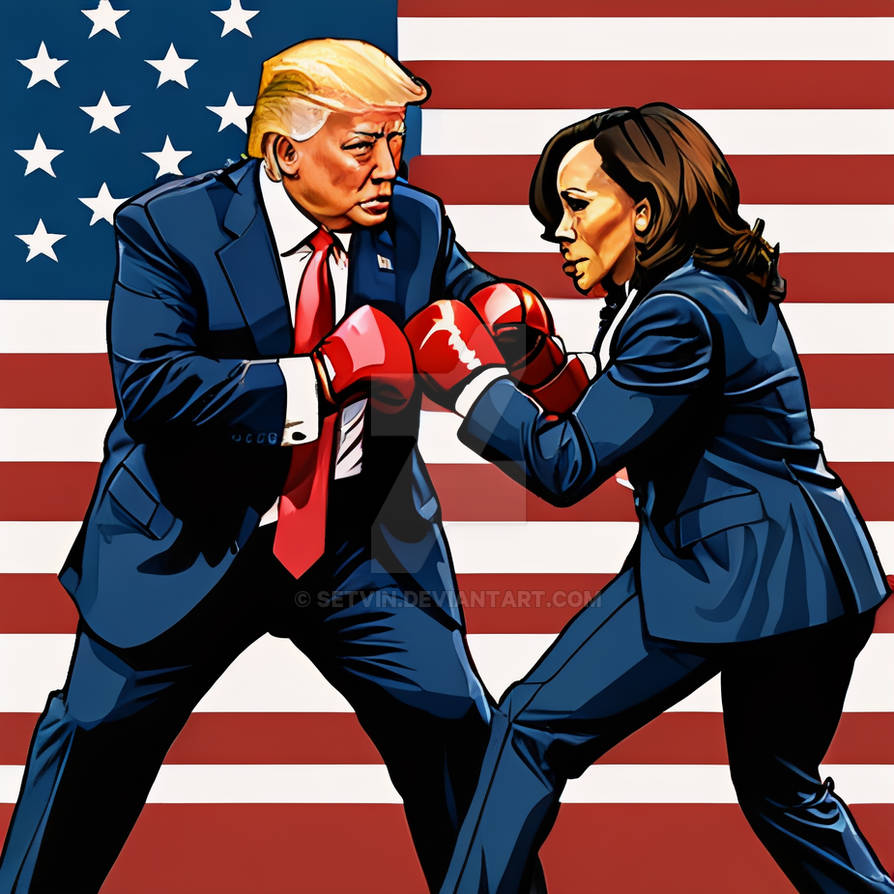
Vice President Kamala Harris made headlines during the recent debate night with a sharp critique of former President Donald Trump, which seemed to get under the GOP presidential nominee’s skin. Her comments not only addressed immigration policy but also took a pointed jab at Trump’s rally crowd size, triggering a heated response from the former president.
Harris’s Critique on Immigration Policy
During the debate, Harris responded to a question about her management of immigration policy by accusing Trump of using immigration as a scare tactic to rally voters. She highlighted a key issue, pointing out that despite his vocal criticisms of immigration policies, Trump had previously instructed GOP members of Congress to vote against a bipartisan bill. This bill aimed to increase the number of border patrol agents to combat problems such as drug and gun trafficking.
Harris criticized Trump for his approach, stating, “He would rather run on a problem than fixing a problem.” She also criticized Trump’s focus on sensational and often absurd claims, mentioning examples such as his remarks about windmills causing cancer and his reference to fictional characters like Hannibal Lecter.
Trump’s Reaction and Rally Crowd Controversy
Trump seized on Harris’s remark about people leaving his rallies, deflecting from the immigration discussion. He countered by claiming that “nobody goes” to Harris’s rallies and suggested that attendees were being “bussed in” and “paid to go” to her events. His reaction was a clear attempt to shift the focus away from the policy debate and onto the size and nature of his rally crowds.
“She said people start leaving. People don’t go to her rallies,” Trump said. “So she can’t talk about that. People don’t leave my rallies.” His response was notably defensive, diverging from his usual debate strategy of staying on message, as seen in his previous debates with President Joe Biden.
In a display of frustration, Trump resorted to his well-known talking points, declaring, “We’re a failing nation,” and asserting that his supporters want to “take the country back.” His comments took a darker turn as he repeated a racist rumor about migrants allegedly engaging in extreme behavior, claiming, “In Springfield, they’re eating the dogs — the people that came in — they’re eating the cats.” He suggested that migrants were consuming pets from local communities, a claim that lacked credible evidence.
Fact-Checking and Public Response
ABC moderator David Muir addressed Trump’s baseless claim by providing a fact-check. Muir reported that the city manager of Springfield had confirmed there were no credible reports of pets being harmed, injured, or abused by individuals within the immigrant community. This correction underscored the importance of verifying information and highlighted the need for accurate reporting in political discourse.
The debate highlighted the ongoing polarization in U.S. politics, with immigration policy becoming a battleground for partisan debates. Harris’s pointed remarks and Trump’s subsequent outburst reflect broader themes in current political discussions, including the impact of rhetoric on public perception and the role of media in shaping narratives.
As the campaign season progresses, the focus on rally sizes and sensational claims may continue to dominate headlines. The exchange also underscores the contentious nature of political debates, where personal attacks and contentious issues often overshadow substantive policy discussions.
The recent debate showcased a moment of intense political exchange, with Kamala Harris effectively challenging Donald Trump on his handling of immigration and rally crowd size. Trump’s reaction, marked by deflection and controversial claims, illustrates the high stakes and heated nature of the current political climate. As the debate continues, the public’s focus on both policy and personal conduct will likely shape the ongoing discourse leading up to the election.
Featured image credit: Setvin via DeviantArt
Follow us for more breaking news on DMR
